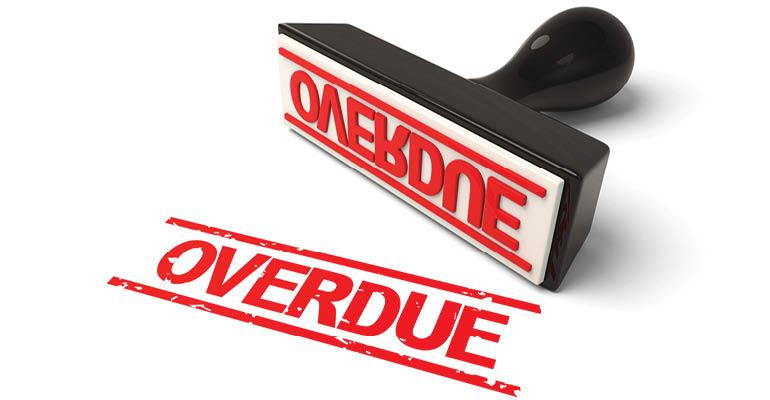A rise in CMBS delinquencies would not normally be cause for celebration. But with the wall of maturities rapidly diminishing, still low delinquencies at this stage of the game is welcome news for capital markets.
The CMBS delinquency rate for U.S. commercial real estate loans did pop up 28 basis points in June to reach 5.75 percent, according to Trepp’s June CMBS Delinquency Report. Those loans that are 60+ days delinquent, in foreclosure, REO or non-performing balloons have inched steadily higher, rising 115 basis points over the past 12 months. Yet that increase is not unexpected given the wall of maturing legacy loans made in 2006 and 2007 that are still being resolved.
So why the uptick in June? “The main culprit is about $1.6 billion in CMBS that reached maturity without payoff in June. This has been the prevailing trend over the past year,” says Manus Clancy, senior managing director of applied data and research at Trepp.
Delinquencies will likely continue to edge higher in the coming months. Some $17.04 billion of CMBS loans are set to mature in the second half of the year, according to Morningstar’s June CMBS Maturity Report. Successfully refinancing many of these loans will be difficult without sharp improvement in cash flow or an equity infusion as nearly 46 percent of those loans have loan-to-values (LTVs) above 80 percent. Across the five major property types, retail represents the largest property type by balance maturing through year-end, according to Morningstar.
The industry appears to be taking news of higher delinquencies in stride. “There may be a little bit of a blip in delinquencies, because you are dealing with some of the dregs of 2007, but I don’t think that is a meaningful part of the market,” says Thomas Fish, executive managing director and co-lead of the real estate investment banking (REIB) practice in the capital markets group at Jones Lang LaSalle.
“Issuance for new CMBS really kicked into gear in second quarter, and spreads have remained in a non-threatening band since the blowout early last year,” says Clancy. “So it doesn’t appear that this is ruffling many feathers in certain parts of the market.” Delinquencies remain low by recent historical standards. The all-time high was 10.34 percent in July 2012, and 40-basis-point jumps were common in 2010, he adds.
In addition, the most recent data from the Mortgage Bankers Association (MBA) indicates a lower level for CMBS delinquencies and negligible levels of distress among other types of lenders. The MBA reported that first quarter delinquency rates for commercial and multifamily mortgage loans were flat or lower, with delinquencies that remained at or near record lows for most capital sources. The MBA results on first quarter delinquencies include:
- CMBS at 4.45 percent on loans that are 30 or more days delinquent or in REO;
- Banks and thrifts at 0.56 percent (90 or more days delinquent or in non-accrual);
- Fannie Mae at 0.05 percent (60 or more days delinquent);
- Freddie Mac at 0.03 percent (60 or more days delinquent); and
- Life company portfolios at 0.02 percent (60 or more days delinquent).
“Those are really fantastic numbers on a historical basis,” says Fish. There is always going to be some level of delinquency in the market. “If you are aggressively making loans, you are going to swing and miss on a few,” he notes. If CMBS has the highest delinquency rate of all the buckets at 4.0 or 5.0 percent, that is a very manageable number, he adds.
Despite the negative headlines about store closures impacting shopping centers, the hardest hit sectors have been office and industrial. Office delinquencies have climbed 191 basis points over the past year to reach 7.67 percent in June, while industrial delinquencies are 162 basis points higher at 7.57 percent, according to Trepp.
The bigger concern for CMBS is not so much delinquencies as it is the subdued activity on the origination side. “That is where we are seeing more of a pullback,” notes Fish. Issuance volume declined to $76 billion in 2016 and the market is on a similar pace for 2017, with issuance volume for the first half of the year at $38.8 billion, according to Commercial Mortgage Alert, an industry newsletter.
The CMBS pie is shrinking due in part to more conservative underwriting and increased competition from other lending sources. There is about $463 billion in U.S. CMBS issuance outstanding, which is down almost $82 billion compared to a year ago, notes Fish. So loans are being paid off or refinanced through other lending options and taken out of the market, and new issuance is not high enough to offset those maturities. “That to me is the bigger concern. How are we going to get our volumes back up to at least year-over-year neutral levels,” he says.

